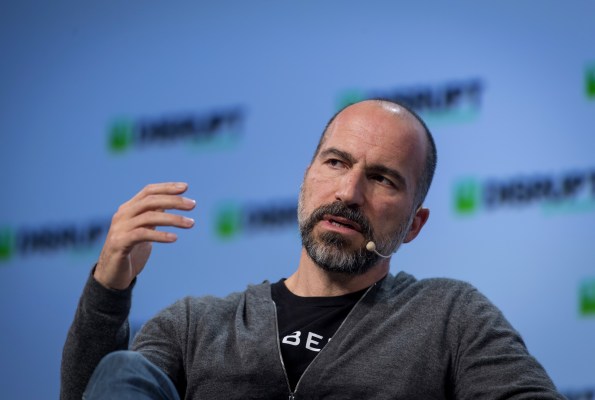
Uber’s second-quarter earnings revealed greater than expected losses, in large part due to the company’s massive $250 million stimulus package launched in April to incentivize drivers back onto the app after a pandemic-induced shortage.
The company reported a loss of $509 million before EBITDA. For comparison, Lyft reported a positive adjusted EBITDA in the quarter at $23.8 million the day before. Uber’s losses point to a larger problem facing the app-based ride-hailing industry: The triple threat of lagging driver supply, the cost of attracting them, and the COVID-19 delta variant looming in the periphery.
“Drivers increasingly want to get back on the road,” said CEO Dara Khosrowshahi during the earnings call on Wednesday. “In June, 60% of inactive drivers told us they intended to start driving again within a month. That’s up from 40% in April. And 90% of drivers told us they expect to come back by September. We’re also beginning to see marketplace metrics revert to normalcy in several markets with surge levels and wait times back to nearly normal in Miami, Atlanta, Dallas, Houston and Phoenix. But in major cities like New York, San Francisco and LA, demand continues to outpace supply and prices in late times remain above our comfort levels.”
Khosrowshahi said Uber is expecting the driver momentum that has been picking up over the last few months to continue, even as Uber tapers off its “post-pandemic” incentives for drivers. But the thing is, the pandemic is far from over. Only 50% of the U.S. population is fully vaccinated, and the CDC has said the highly contagious delta variant has caused between 80% and 87% of all U.S. COVID-19 cases in the last two weeks of July. Many computer models predict case counts will peak sometime between mid-August and early September, bringing as many as 450,000 daily cases.
Lockdowns haven’t been the only things causing driver shortages: Drivers don’t want to risk their lives during a pandemic for what is often argued to be meager pay. Uber’s losses and attempts to attract more drivers also come as the company is back on stage as a potential threat to gig workers’ labor rights. Uber is part of a coalition of app-based ride-hailing and on-demand delivery companies that filed a petition this week to introduce a ballot measure in Massachusetts that would define drivers as independent contractors, not employees — similar to what happened last year in California with Proposition 22.
“I took the incentives that they used to get people back, and I think most drivers that have any brains did the same,” an Uber driver called Jay who’s been driving since 2013 told TechCrunch. “And once the incentives ran out, I stopped driving, because I’m losing money when I drive for them now. They have cut the rates so low that it doesn’t make any sense anymore to work for them, and that’s why people are having such a hard time getting an Uber. You have these disgustingly out of touch billionaires running this company into the ground.”
Despite these setbacks, Khosrowshahi — presumably one of the “out of touch billionaires” Jay references — went on to assure investors that Uber expects to achieve total company EBITDA profitability by the end of the year. Uber is hoping its investments in what it calls the “earner experience” will help retain workers.
“From doubling down on our app quality to targeted and personalized reengagement campaigns, to completely redesigning our onboarding flow to make it easier and faster than ever to earn safely, to rolling out unique programs like free language learning from Rosetta Stone, or free tuition with ASU, our earner super app is unique in the depth and breadth of earnings opportunities we can offer drivers and couriers globally,” he said.
If mobility continues to take a hit, as it has recently in cities like Sydney, Australia due to persistent lockdowns, Khosrowshahi says Uber can fall back on its other businesses, like freight, Uber Eats and courier service. Khosrowshahi said there’s been a trend of Uber Eats and courier orders increasing as rides decrease.
Last November, Uber acquired online food delivery app Postmates, which the company says has resulted in nearly 5 million additional consumers, 160,000 couriers and over 25,000 merchants migrating from Postmates to Uber Eats, as well as helping Uber establish itself as a category leader in Los Angeles and New York City.
Uber has also expanded into new verticals recently like grocery, convenience and alcohol delivery, with U.S. gross bookings in June nearly tripling from December 2020 levels and doubling in the U.K. and France.
“The differentiator that we have is the audience and the Uber platform,” said Khosrowshahi. “We were actually one of the latest players to build up a delivery business, and we built it based on the Uber brand, the marketplace-matching technology that we have, the pricing technology, routing, etc. [ … ] We’ve got bigger datasets than anyone else. We’re able to train our algorithms over much larger global data points versus our competitors, which allow us to build a matching, routing, incentives, marketing engine that is more personalized and just has greater capabilities than anyone else.”
Khosrowshahi also noted that the company has ops teams on the ground in every market so it can understand the right inventory per marketplace.
“It all translates into: Lower cost of customer acquisition, higher lifetime value, lower overheads and greater tech capabilities. That’s the differentiator.”
Aside from hitting its EBITDA goals by Q4, Khosrowshahi said Uber expects total company gross bookings to be between $22 and $24 billion, and total company adjusted EBITDA to be better than a loss of $100 million for Q3.
"from" - Google News
August 06, 2021 at 04:45AM
https://ift.tt/3CdmTY2
How Uber plans to rebound from massive Q2 losses stemming from driver incentives - TechCrunch
"from" - Google News
https://ift.tt/2SO3d93
Shoes Man Tutorial
Pos News Update
Meme Update
Korean Entertainment News
Japan News Update

No comments:
Post a Comment